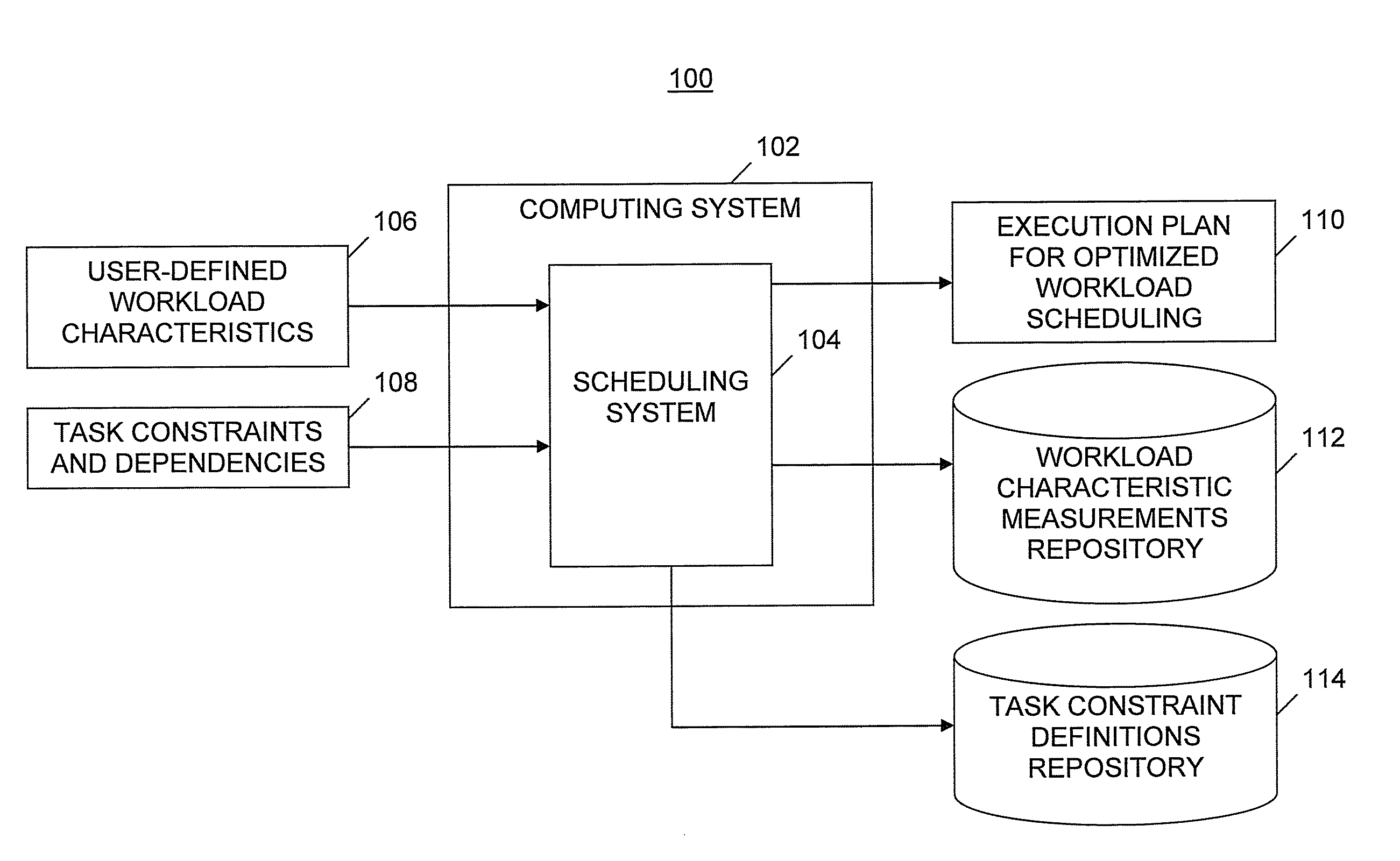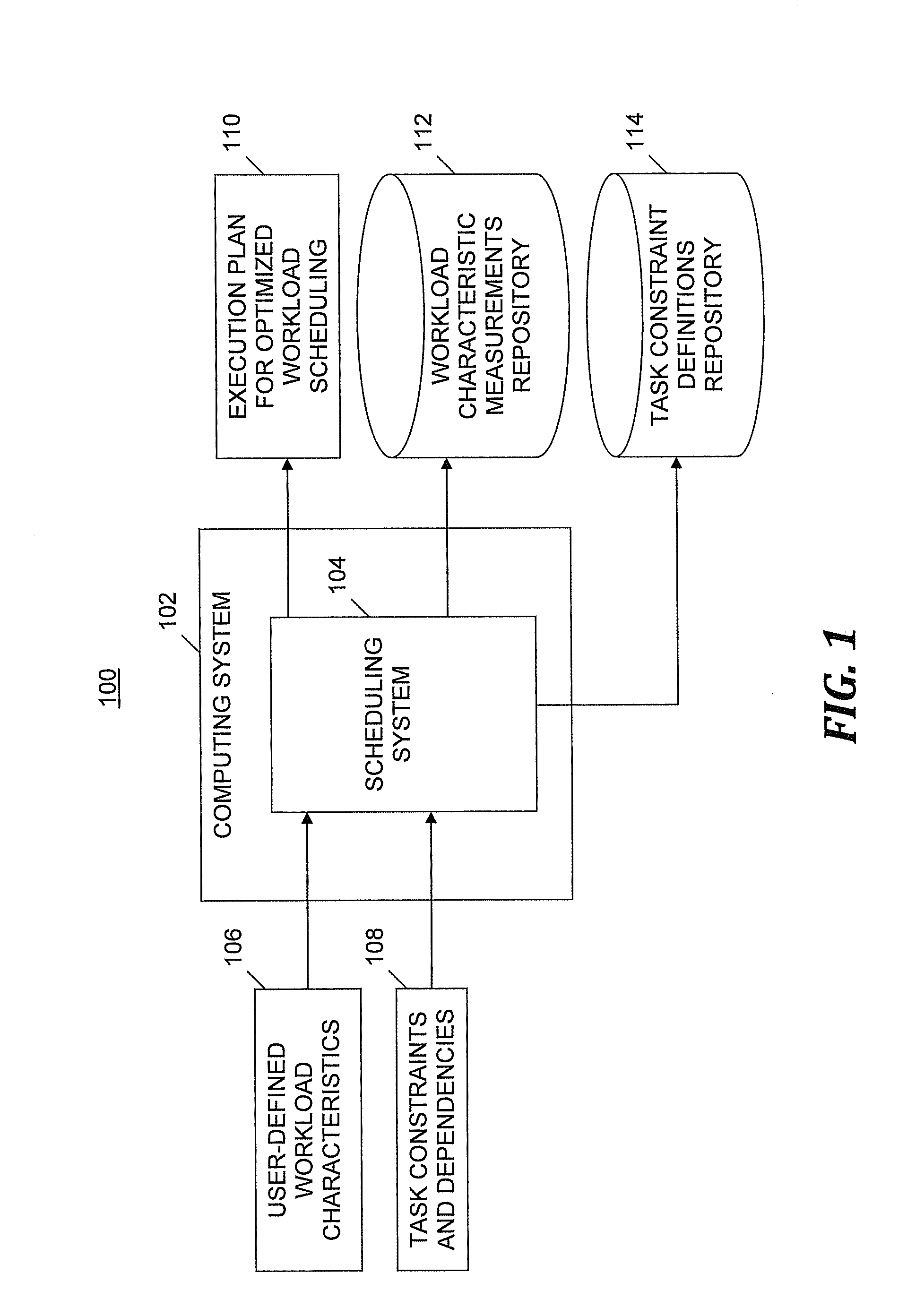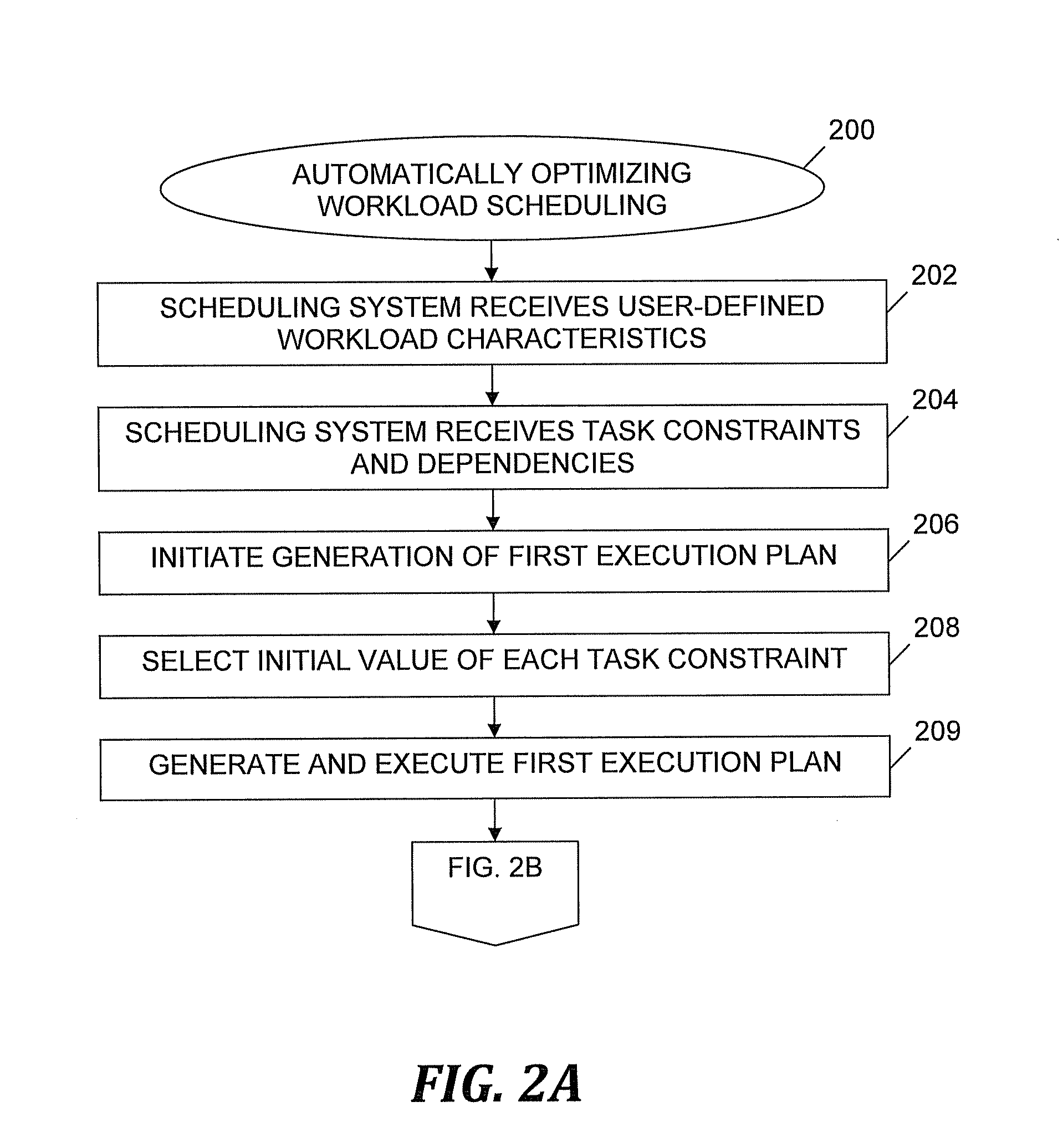Autonomic workload planning
a workload and automatic optimization technology, applied in the field of workload scheduling systems, can solve the problems of time-consuming and error-prone optimization actions, and cannot prevent the same conditions from appearing in the futur
- Summary
- Abstract
- Description
- Claims
- Application Information
AI Technical Summary
Benefits of technology
Problems solved by technology
Method used
Image
Examples
Embodiment Construction
Overview
[0008]An embodiment of the present invention provides a user-defined and automatic optimization of workload scheduling (i.e., workload planning) in an IT infrastructure via an autonomic system and process that modifies the shape of an execution plan (a.k.a. workload execution plan). The automatic workload scheduling optimization system and process disclosed herein is based on a set of measurements that are taken at execution time to determine each single task's contribution to the overall workload. After collecting the information about the tasks' contributions, the system automatically determines how to change scheduling definitions so that the workload is optimized as requested by the user. As used herein, an “execution plan” is defined as a list of automated tasks scheduled for execution on a variety of computer systems in a predefined time frame. The execution plan includes information about tasks to be executed as well as information about time constraints and dependenc...
PUM
 Login to View More
Login to View More Abstract
Description
Claims
Application Information
 Login to View More
Login to View More - R&D
- Intellectual Property
- Life Sciences
- Materials
- Tech Scout
- Unparalleled Data Quality
- Higher Quality Content
- 60% Fewer Hallucinations
Browse by: Latest US Patents, China's latest patents, Technical Efficacy Thesaurus, Application Domain, Technology Topic, Popular Technical Reports.
© 2025 PatSnap. All rights reserved.Legal|Privacy policy|Modern Slavery Act Transparency Statement|Sitemap|About US| Contact US: help@patsnap.com



